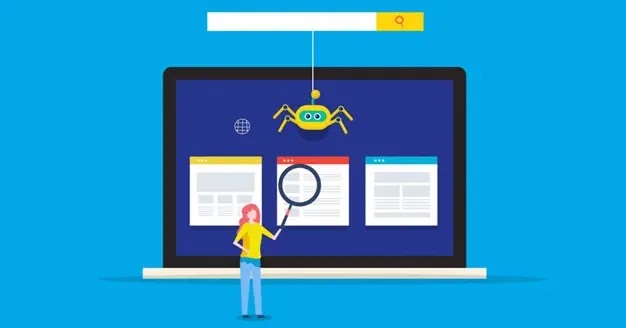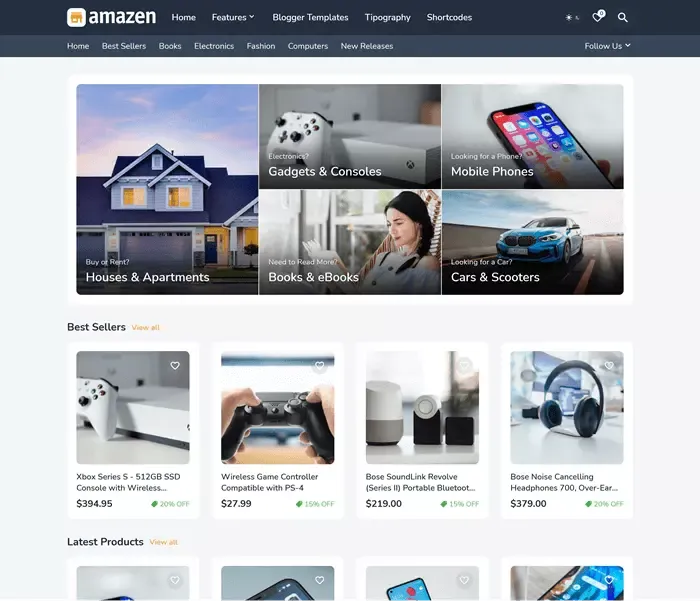E-Commerce Business Model - Guide
Nowadays, online shopping is almost as prevalent as physical shopping. The
COVID19 pandemic certainly contributed a lot to this which completely changed
the way of doing business and also the behavior of consumers.
Statistics
show that in 2020, compared to 2019, card payment transactions over the
Internet jumped by 33.37%, and in 2021, compared 2020, by as much as
75.77%.
What is E-commerce, what are the advantages and
disadvantages of this business model as well as what do you need to pay
attention to when applying it you can find out in the rest of the text?
What is E-commerce?
E-commerce is the buying and selling of products and services via the
Internet. In addition, it also includes online customer support. This business
model implies a fairly easy and fast way of shopping, given that customers can
easily search and filter desired products or services.
Quite often
people confuse E-commerce with E-Business, which can be used interchangeably
but are not synonymous. E-commerce refers only to the transaction of products
and services, while E-Business refers to all aspects of running an Internet
business.
Types of E-commerce business models
E-commerce businesses can be categorized by the products and services
they sell, but also by who sells them, as well as by platform. We will further
list the types of e-commerce models according to who sells them and to
whom.
1. Business to Consumer (B2C)
B2C is the most popular e-commerce model and involves sales between businesses
and consumers. Most people think of this model when they hear about
E-commerce.
2. Business to Business (B2B)
B2B refers to companies that sell products or services to another company. It
usually includes raw materials, software, or combined products.
3. Direct to Consumer (D2C)
This is the latest model of e-commerce and implies that the brand
directly sells products or services to the end customer without a retailer or
distributor. Subscriptions are a popular part of this model.
4. Consumer to Consumer (C2C)
It refers to the sale of products or services to another
consumer. This happens on online qualified ads or forums. The most famous
example of this model is E-Bay.
5. Consumer to Business (C2B)
This model implies that the consumer sells his products or
services to the organization. Consumers announce a project with a certain
budget, and companies bid for the project. After that, consumers review the
offers and choose a company.
Reasons for introducing online sales
As stated earlier in the text, E-commerce is becoming more and more
popular day by day. Considering its speed and ease of use, which is suitable
for both the consumer and the employer, many people opt for this type of
business.
In the following text, we will talk about 6 reasons for
introducing online sales.
- Additional sales channel - If you already own a retail store, you can also sell online. You can develop your business and reach new markets and customers.
- Your competition is already there - If your competition has already launched online sales, it can take over your potential customers as well as customers who are already with you. While you are thinking about that option, the competition is positioning itself on the market. The longer you are out of the market, the harder it is to get involved later.
- Location and availability - When selling online, you have no limit as far as location is concerned. You can deliver your products to consumers who are far from you.
- Without a retail store - You can do away with a physical store and thus reduce the cost of renting a store, hiring workers, etc. A well-developed E-commerce can help you optimize your costs and business.
- Saving storage costs - By selling online, you have the opportunity to reduce the need to rent warehouse space. Certainly, a large number of online sellers have warehouses, but to a much lesser extent. As a result, the costs are lower.
- Saving time for customers - A customer who buys online wants to quickly and safely order goods and have the goods delivered to his home address. As time is the most important resource, online shopping is a great time saver for customers.
Advantages of E-commerce business model
As we mentioned earlier in the text, the biggest advantage of this business
model is the speed and simplicity of application. Instead of searching for
products in stores, e-commerce offers the possibility to search for product
categories and the site search function. The advantages that should not be
ignored are the following:
- Availability - E-commerce sites are available 24/7 and allow consumers to search the site and order at any time.
- Speed of access - Crowds in the store can tire customers a lot, but unlike them, e-commerce sites work quickly. Product pages and shopping carts load quickly, and transactions are just a few clicks away.
- International reach - E-commerce allows products to be sold to any consumer who can access the web.
- Lower costs - As mentioned earlier, online trading companies do not have the costs of renting space, inventory, and cash registers. May have shipping and warehousing costs.
- Personalization and product recommendation - E-commerce sites can track browsing, search and purchase history. They can use this data to create personalized recommendations.
Disadvantages of E-commerce business model
In addition to numerous advantages, E-commerce also has a few
disadvantages, and they are:
- Inability to touch or see - Even though e-commerce businesses upload product images, they cannot provide a good feel for the product. E-commerce can lead to consumers receiving products that differ from their expectations.
- Waiting time - When buying a product in a store, the customer immediately buys and takes the product with him. With e-commerce, the customer has to wait for the product to be delivered.
- Security - Hackers can create a site and claim to sell well-known products. Instead, the site sends stolen products or just collects the customer's credit card information. Also, the seller's website can be hacked.
- Hidden costs - During online shopping, the consumer is aware of the price of the product, delivery, and potential taxes, but there is a possibility that some costs will not be shown on the bill but during payment.
What should be paid attention to when applying the E-commerce business model
When applying this business model, it is necessary to pay attention
to:
- Legal rules and regulations - If you want to start your e-commerce, consult with others and do as much research as possible. Also, it is very important to comply with legal regulations.
- Research the market and competition - This advice applies to all types of business models. Invest your time in market and competitor analysis. There are various methods for this, some of which you can use is SWOT analysis and bid/price comparison.
- Defining the target customer - As in physical business, so in online, it is very important to define the buyer persona. The buyer persona is a picture of the buyer with an emotional and demographic map. It can help you deliver your message and product more easily to an eager customer.
- Constant analysis and willingness to change - If you want to progress, you need to constantly analyze the market situation. Try new things and be ready for change.
- Speed of response to inquiries - The most important thing is that customers are satisfied because that way they will always come back to you. You can achieve this by quick and transparent responses to inquiries.
Examples of E-commerce platforms
Amazon
Amazon is one of the most popular E-commerce sites that is spread all
over the world. Its income in 2021 amounted to 469.8 billion dollars. Amazon
has about 200 million American leading members and is one of the largest
online markets in the world. Amazon offers consumers a wide selection of
products and businesses to reach a large audience on the platform.
eBay
eBay has about 1.5 billion products on its site and 147 million active
buyers in 2021. It connects buyers and sellers from all over the world and can
help small and medium-sized businesses establish a user base. It is easy to
use and offers several payment options.
Alibaba
Alibaba had 1.24 billion customers and $109.48 billion in revenue in
2021. It is one of the largest online marketplaces in the world where
retailers can source products from their suppliers. It is suitable for buying
products in bulk.
Conclusion
E-commerce is one of the business models that is growing more and more.
Because of this, today more than ever you can succeed in the world of online
shopping.
To run a successful E-commerce business, you need
knowledge and understanding of supply and demand. You should not expect that
the business will flourish immediately, but you need to be patient.
With
a little patience, good research, and investing a lot of effort, you can
achieve great success in the E-commerce business.







